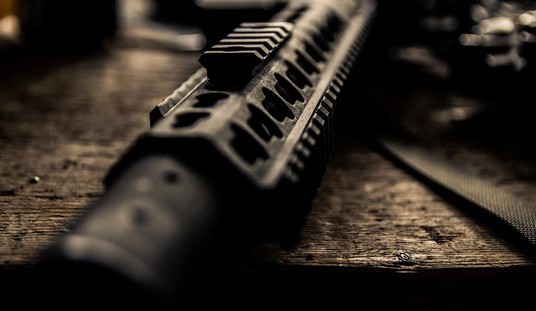We’re just a week away from the fourth and final industry day where handgun manufacturers will meet to discuss the U.S. Military’s requirements for the XM17 Modular Handgun System (MHS). The XM17 project winner will be a replacement for the venerable, but now worn-out M9s made by Beretta that have been the nation’s top military pistol for 30 years.
The meeting will take place on July 7-8 at New Jersey’s Picatinny Arsenal.
The winner of the MHS contract is expected to be awarded the contract for roughly 280,000 full-size handguns for the Army, more than 200,000 for the Navy, Air Force, and Marines, and perhaps as many as 10,000 compact variants for concealed carry by military and DoD civilain law enforcement and clandestine special operations use.
While numerous companies will be vying for the lucrative contract, it’s going to be very tough for companies to meet the demands of the contract, which are designed to obtain the best handgun possible based upon new advances in the field of combat human factors and anthropomorphic research.
Official requirements for the XM17 program include:
- non-caliber specific
- modular grips
- grip that accepts a wide-range of hand-sizes (5th to 95th percentile)
- ability to accept different fire-control devices/action types
- ability to accept various magazine sizes
- suppressor compatible
- ability to mount “target enablers” (lights, lasers, etc) on a picatinny rail
- match-grade accuracy (90% or better chance 4″ circle at 50 meters)
- low felt recoil impulse
You may be surprised at the top contenders… and at which popular companies don’t come close to making the cut.
STI-Detonics STX

Who?
Neither Detonics Defense nor STI are household names, nor are they even particularly well-known among other gun companies. Detonics Defense is primarily a research and development “skunkworks” focused creating designs and patents around combat human factors research, while STI is primarily known as the maker of high-end competition handguns and elite military and law enforcement units. Together, they form a singular David in a roomful of handgun industry Goliaths.
The two companies formed a strategic partnership just two weeks ago to build a number of different modular handguns using patents held by Detonics, incorporating STI’s vaunted engineering and production prowess. Looking roughly like a 1911, the STX uses a drop-in striker box system that can be easily swapped out with other trigger packs, is caliber agnostic, uses a truly modular frame and grip that enables either a long or a short grip to be installed, has felt recoil up to 40% less than comparable designs, and is perhaps the only contender that exceeds the MHS spec for fitting various hand sizes.
Interestingly enough, the STX is also the only metal-framed handgun thought to be in contention for the contract, which may be a dual blessing for the upstart team. The U.S. military has never fielded a polymer-frame firearm to the masses, and there have been persistent rumors that the military has found problems with polymer handgun frames holding up in certain operational environments.
While STI-Detonics may not have the production capability of the other contending companies, that could be rendered an irrelevant point if the MHS contract is awarded based on an intellectual property package (IPP) basis, and is produced in-house by the Army.
Sig Sauer P320 MHS

In our estimation, the MHS variant of the Sig P320 is one of the top polymer-frame handguns in the MHS competition, and along with the STI-Detonics STX and the Beretta APX, make up the only truly modular designs competing for the contract. The P320 MHS is platform agnostic, and can swap out frames and top ends on the same serialized chassis system to meet the requirements for a full-size and compact pistol. The grip is also believed to meet the 5th-to-95th percentile handgun grip requirements. It remains to be seen if the P320 MHS’s relatively high bore axis and relatively conventional grip geometry will generate more felt recoil than some of the other contenders.
Beretta APX

Beretta’s M9 has been the workhorse pistol design for the U.S. military for the past 30 years, and the company would love for their APX to be the U.S. military’s pistol for the next 30 years. Prototypes of the APX are in the hands of professionals at this moment, but they were not ready for us to fire when we Beretta hosted it’s first ever Tactical Summit earlier this year. The grip angle and low bore axis suggest that it might be softer-shooting that the P320, but until we get our hands on an APX on the firing line, we’ll have no way to know for sure.
The Could Have Beens
Smith & Wesson/General Dynamics M&P
General Dynamics and Smith & Wesson have public announced plans to enter a design in the MHS competition, but unlike the designs from Beretta, Sig Sauer, and STI-Detonics, the frame of the M&P isn’t modular. While end users can swap out the backstrap of the pistol to better fit certain hand sizes, the grip is an integral part of the frame. While well-established and a proven design, the M&P isn’t particular innovative. We’re suspecting that the MHS variant is substantially different that current production M&Ps. It if isn’t, the design doesn’t stand a chance.
Glock
While the Glock is used by military forces around the world, and variants are approved for use in some specialized roles in the U.S. military, the Austrian company simply doesn’t come close to meeting the specs of the of MHS program. The Glock 22 is a likely entrant, but is only there for show.
HK
HK’s VP series is mentioned as a MHS contender, but like the Glock and Smith & Wesson designs, isn’t modular, and doesn’t appear to be caliber-neutral.
Walther PPQ
The PPQ is a joy to shoot and one of my personal favorites among striker-fired pistols. Unfortunately, it suffers from all the same MHS specification deficiencies as the HK VP series.
Colt
We’re only mentioning the bankruptcy-saddled company to address gray-haired readers that still insist that military should roll back the clock and reintroduce the 1911.
Um, no. Every pistol on this list is more accurate, reliable, has a higher magazine capacity, and better recoil control that the service grade 1911.








Join the conversation as a VIP Member